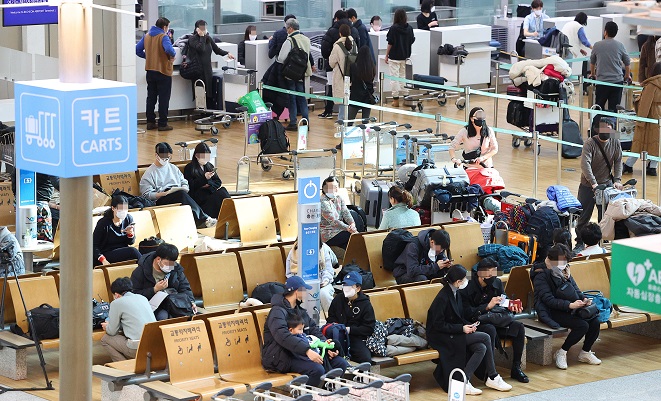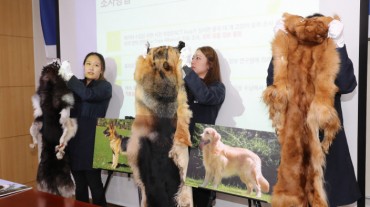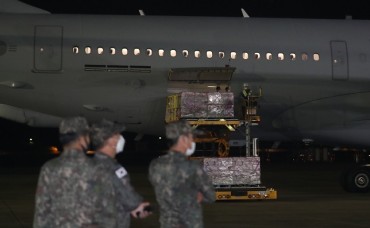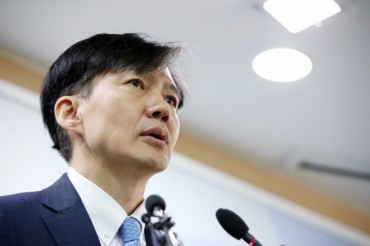
Most passengers continue to wear masks at Incheon International Airport, west of Seoul, on Jan. 30, 2023, despite the lifting of the country’s indoor mask mandate on the day. (Yonhap)
SEOUL, Feb. 1 (Korea Bizwire) – South Korea’s new COVID-19 cases rose to over 20,000 on Wednesday as the government eased indoor mask-wearing restrictions in an effort to fully restore pre-pandemic normalcy amid a recent overall downward trend.
The country reported 20,420 new cases, including 28 from overseas, bringing the total caseload to 30,197,066, according to the Korea Disease Control and Prevention Agency (KDCA).
The daily count rose from about a seven-month low of 7,416 on Monday to 19,629 on Tuesday. Wednesday’s figure was also slightly higher than the previous week’s 19,527 cases.
The country added 42 COVID-19 deaths, bringing the death toll to 33,486. The number of critically ill patients came to 359, down from 387 the previous day, the KDCA said.
The country, however, has seen a gradual decline in new infections in recent weeks, and it lifted the indoor mask mandate Monday after it had been in place for more than two years, excluding at hospitals, pharmacies and public transportation.
The full removal of the mask restrictions could be possible around May, and a full shift to a pre-pandemic medical system would be desirable around October and November, according to Jung Ki-suck, chair of the government advisory committee for COVID-19.
But the government decided to maintain a seven-day mandatory quarantine for those infected with the virus and has implemented several other restrictive measures, including curbs on entrants from China.
South Korea halted the issuance of short-term visas from diplomatic missions in China and requires those entering the country to undergo a coronavirus test before and after arriving here, which will be in effect until the end of this month.

Students shedding their masks and others wearing them attend a class at an elementary school in the southeastern city of Daegu on Jan. 30, 2023, as the government lifted the indoor mask mandate on the day that had been in place amid the coronavirus pandemic. (Yonhap)
“The lifting of the indoor mask mandate is a crucial step toward regaining normalcy. But COVID-19 still poses a danger just as the World Health Organization sees it as a global public health emergency,” senior interior ministry official Kim Sung-ho said during a meeting of the Central Disaster and Safety Countermeasures Headquarters.
“The government will closely monitor the possibility of a virus resurgence in line with a virus inflow from China and the mask mandate adjustment, and strive to manage the virus situation,” he added.
The public health agency said 146 out of 7,399 arrivals from China between Jan. 22 and Jan. 28 tested positive for COVID-19. Among 1,642 people coming here for a short-term stay, 4.4 percent tested positive for the virus, it added.
Last week, the country reported a total of 148,020 coronavirus cases, down 29 percent from a week earlier, and the numbers of deaths and serious cases also fell compared with the previous week, according to the KDCA.
The reproduction rate came to 0.75, staying below 1 for four weeks in a row, and the agency put the nationwide risk level of the virus at “low” for a second straight week.
But the KDCA called on people to be vaccinated, as the ratio of those presumed to have re-contracted the virus has been on the rise from around 19 percent in December to around 23 percent in January.
The BN.1 omicron subvariant became a dominant strain in South Korea last week, with its detection rate coming to 48.9 percent of the total virus cases last week, the KDCA said.
It replaces BA.5 and its subvariants, which accounted for 35.5 percent of the total infections here.
(Yonhap)






